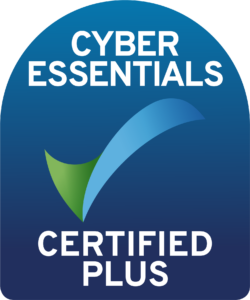How the rules of engagement are changing.
It’s often alluded that sales teams are ‘coin operated’ and the single biggest motivator are pound/dollar signs. Although this is a very large brush to tar all tech sales teams with, there are clear advantages for marketers who have a very single-minded sales arm that they need to motivate or influence. But the question that has to be asked is, are these types of initiatives past their sell by date with the movement away from volume product sales?
SPIF (Sales Promotion Incentive Fund) campaigns have been traditionally used as a catalyst to boost a specific product, solution or service either to hit end of quarter/year sales targets or to provide stimulated demand for a new offering. Now that buyer sprawl has permeated outside the IT function into other business units such as marketing and HR, and conscious efforts have been made to sell into the boardroom, are product pushes now becoming constrained to traditional IT buyers?
Well in the purest sense, yes. In order to push through last minute deals requires a number of proverbial stars to align:
Product knowledge: The buyer needs to be up-to-speed with the technology and how it can impact the business. Lack of understanding or a more complex offering will increase lead times, size of decision maker groups and will ultimately not be suitable for a SPIF type campaign.
Imminent need: Technology purchases aren’t an impulse buy. The product, solution or service needs to already be on the radar of the prospect and preferably the vendor in question is already on the shortlist for a proposal.
Low risk: This ties into the above 2 points. Large scale, large ticket, transformative solutions are just too risk-laden to be purchased on a whim. Sure, they can tie into a longer term incentive programme but not in the ‘stack ‘em high, sell ‘em cheap’ mould of quarterly incentive schemes.
Funding: Budget cycles may be preventative to purchase so flexible funding or an Opex led model may be required to close the deal when funds aren’t readily available. If this isn’t an option then don’t be surprised if the deal falls flat.
So, if this technique has a captive audience, the traditional SPIF model needs to be re-engineered to reward sales teams that push technology solutions with longer lead times, more diverse and elevated decision maker groups which also have larger associated price tags. As we know figures and pipeline drive sales teams so instigating a programme of this nature needs to encapsulate a number of hooks to ensure buy-in. Failure to do so will result in an unengaged and unmotivated salesforce that defaults back to box pushing.
Accountability
Attribution modelling now allows complete visibility of the sales pipeline and the relevant touch point the prospect has received on along the way. By implementing such a transparent pipeline allows sales teams to be compensated even when lead times span over several quarters.
Short-term reward vs long-term pay-off
Like football managers, sales people are judged on results. Failure to meet quotas or quarterly benchmarks can be detrimental to their job prospects. Being able to change mindsets and focus from quick sales wins to longer term account penetration is no easy feat. But, if positioned correctly and sales teams adopt the vision then the rewards can prove plentiful and frequent.
Championing success
Recognition can be a potent tool on a number of levels. Kudos amongst peers shouldn’t be underestimated, by positioning members of the organisation as sales champions not only demonstrates campaign success, it also embeds a sense of aspiration coupled with a dose of healthy competition amongst co-workers “if they can achieve this then so can I”.
Ownership
Unlike selling point products to IT (with limited emotional attachment associated to them), the boardroom is completely different sales environment altogether. Being able to talk the language of business can deepen relationships, further embed the tech vendor into the organisation and open the door to future opportunities. The golden goose scenario is one where sales teams aspire to be, so once they have a foot in the door ensuring ownership and involvement is paramount.
To understand how to maximise the effectiveness of your internal sales programmes talk to The Rubicon Agency and see how sales enablement can be tailored to your organisation.
